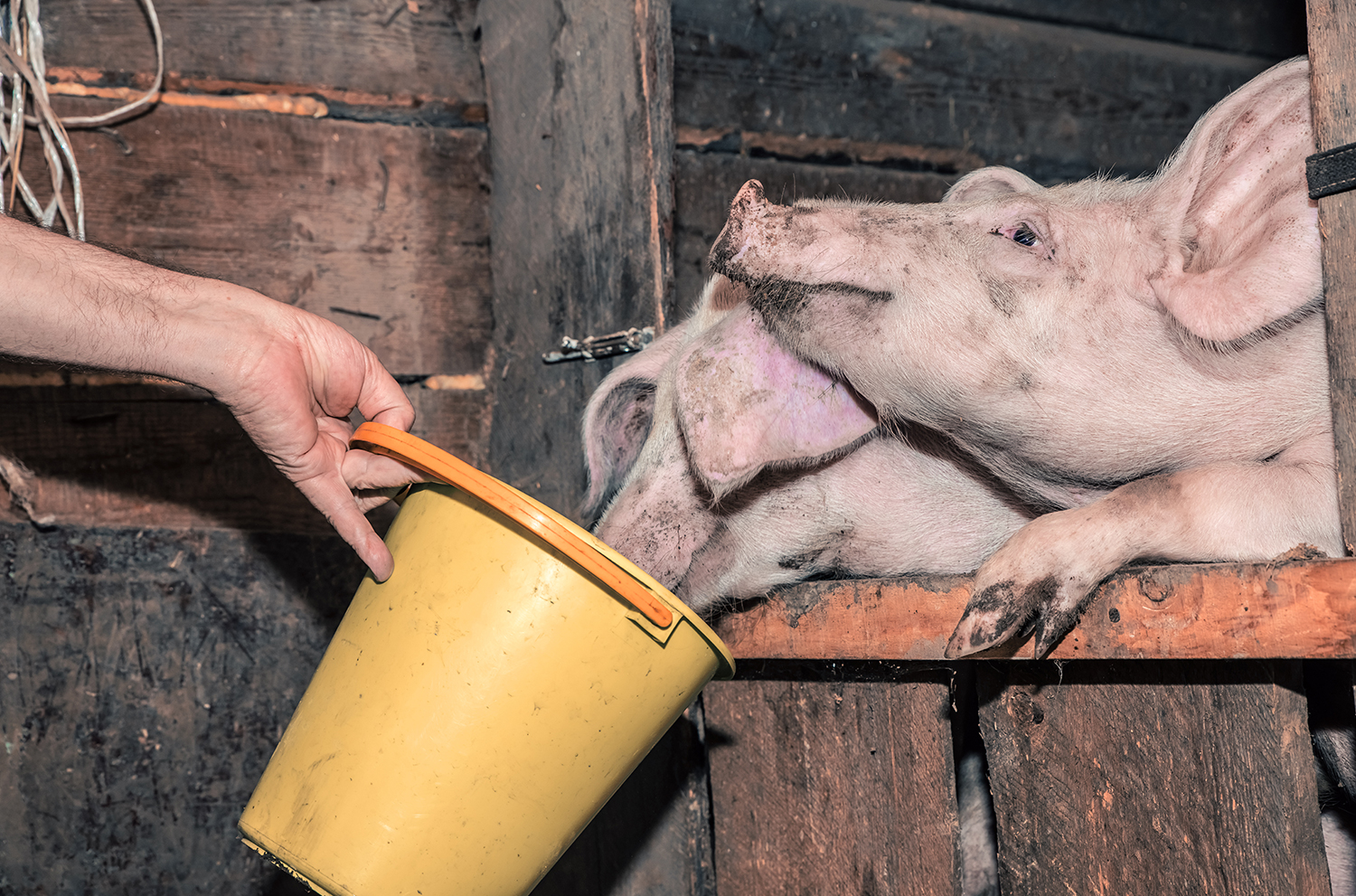Tapeworm infection occurs due to consumption of food or water contaminated with tapeworm eggs or larvae. Tapeworm infection is usually caused by two species of tapeworms - Taenia solium (pork tapeworm) and Taenia saginata (beef tapeworm).
The eggs of the tapeworm can be transmitted from one person to another. Also, insects can also transmit the eggs to human beings. These different causes of tapeworm infection have been discussed below.

Ingestion of eggs:
The food or water can be contaminated with the stools of an individual or animal hosting a tapeworm. For instance, if a pig has a tapeworm infection, it will pass the tapeworm eggs in its stools, which enter the soil. This soil can contaminate the food and water. If a human eats or drinks from this contaminated source, the person gets infected. After reaching the intestine of the humans, the eggs mature into larvae. These larvae can move out of the intestine and form cysts in other tissues like lungs, liver or central nervous system.
Ingestion of larvae cysts:
An animal with tapeworm infection may have tapeworm larvae in its muscle tissues. If a human eats this meat (muscle tissue) raw or without cooked properly, the tapeworm larvae are also consumed with the meat. Once the larvae reach the intestine, they develop into adult tapeworms. These adult tapeworms can survive in the intestine for several years. Some tapeworms attach to the intestinal wall and cause mild inflammation or irritation. Other tapeworms may be eliminated from the body through feces.
Insect-to-human transmission:
Insects, like some beetles and fleas, can pick up the eggs by eating feces of mice or rats with tapeworm infection. These insects can pass the eggs to humans when they are accidently eaten. Such insects are known as intermediate hosts. After reaching the intestine of the human, the eggs develop into adults. This type of transmission occurs with dwarf tapeworms.
Reinfection
If good hygiene practices are not followed during treatment, humans can infect themselves again. This is possible if the individual does not wash his/her hands after going to the toilet. The eggs in the stool may remain in the person’s hand and cause infection again.
Human-to-human transmission:
The eggs of a dwarf tapeworm can be transmitted from one person to another by poor hygiene habits. If the eggs are present in one’s hand, they can be transmitted to another person via an object or by touching or handshakes. The eggs of the dwarf tapeworm can mature into adults and reproduce in the intestines. This is the only tapeworm that can complete its entire lifecycle in a single host.
Dwarf tapeworm infection is common among children, individuals living in unhygienic conditions, especially in the regions where fleas are prevalent.

Risk factors of tapeworm infection
The factors that increases the risk of tapeworm infection include:
Exposure to livestock: If a person works in a pig farm or with any other animal, the risk of infection is high. Ineffective disposal of the animal and human feces at these areas, further increases the risk.
Lack of hygiene: The risk of infection is greater if the hands are not washed frequently and if the person does not bathe regularly, where the contaminated matter can be transferred to the mouth.
Travelling to certain areas: Travelling to or living in the regions where sanitation practices are poor, the risk of tapeworm infection increases.
Eating raw or undercooked meat: Eating raw or undercooked meat contaminated with tapeworm eggs and/or larvae can cause the infection. Experts suggest that the sushi must be frozen beforehand to reduce the risk of infection. Also, freshwater fish are more likely to be contaminated than seawater fish.